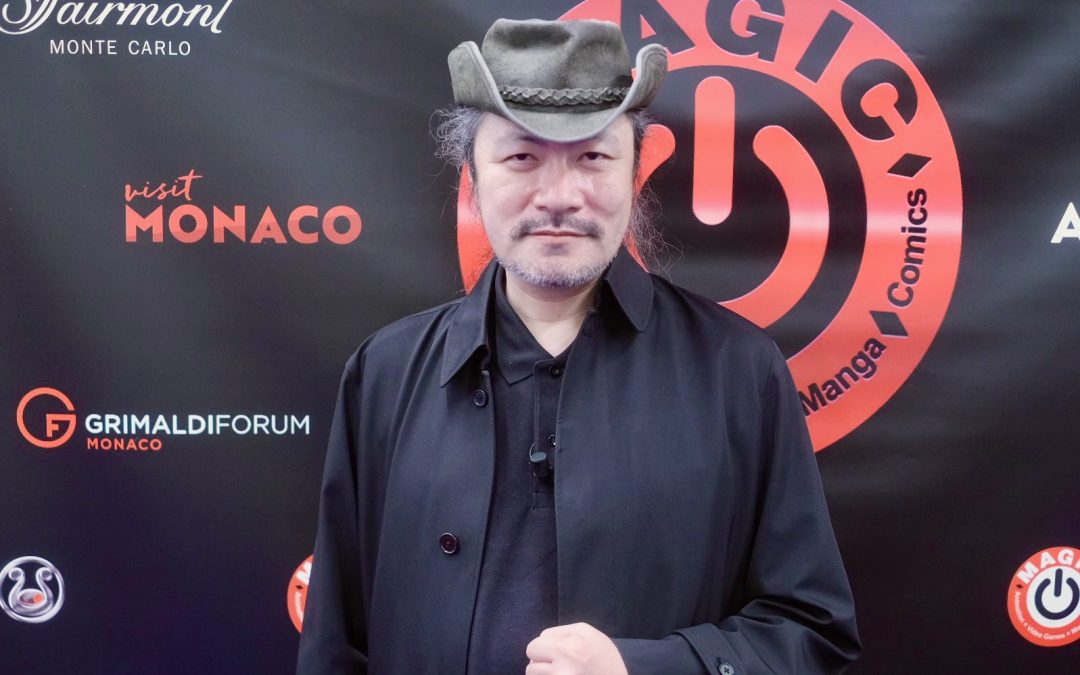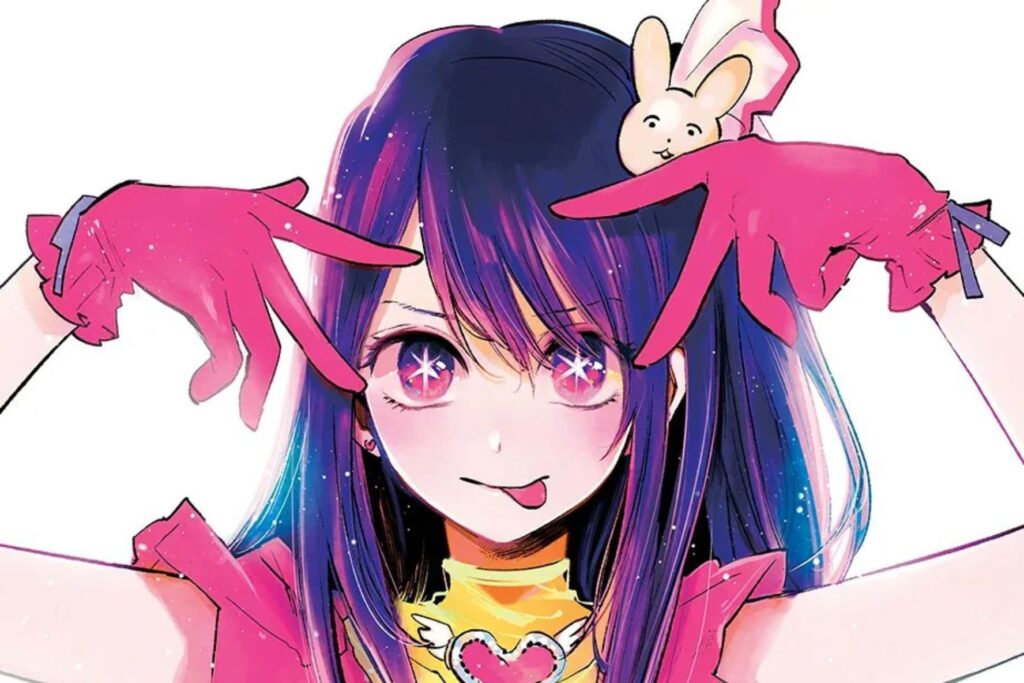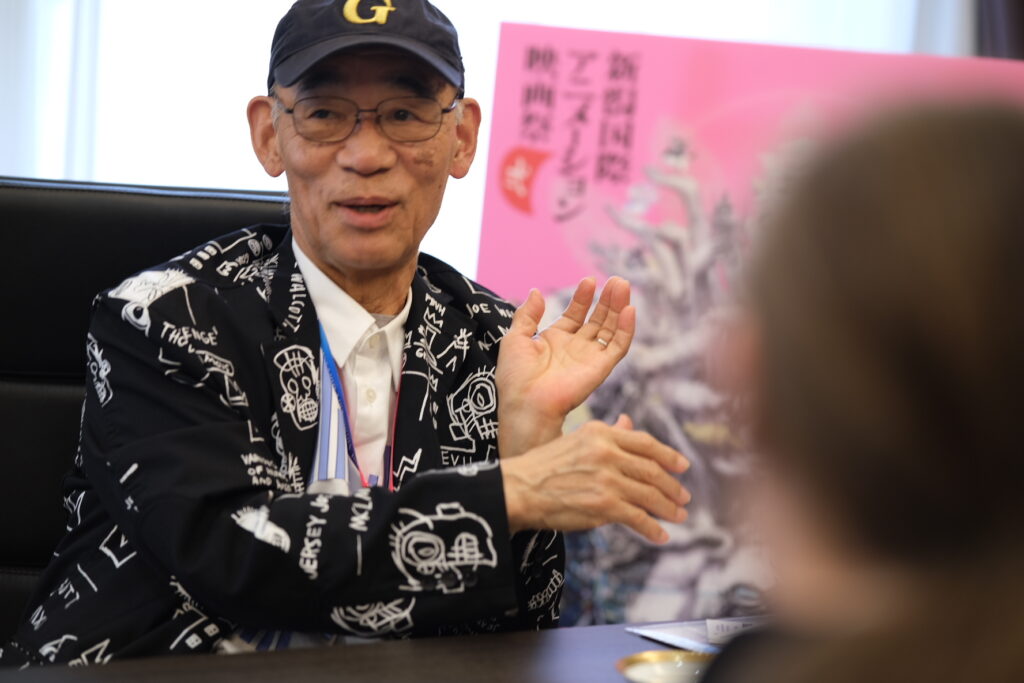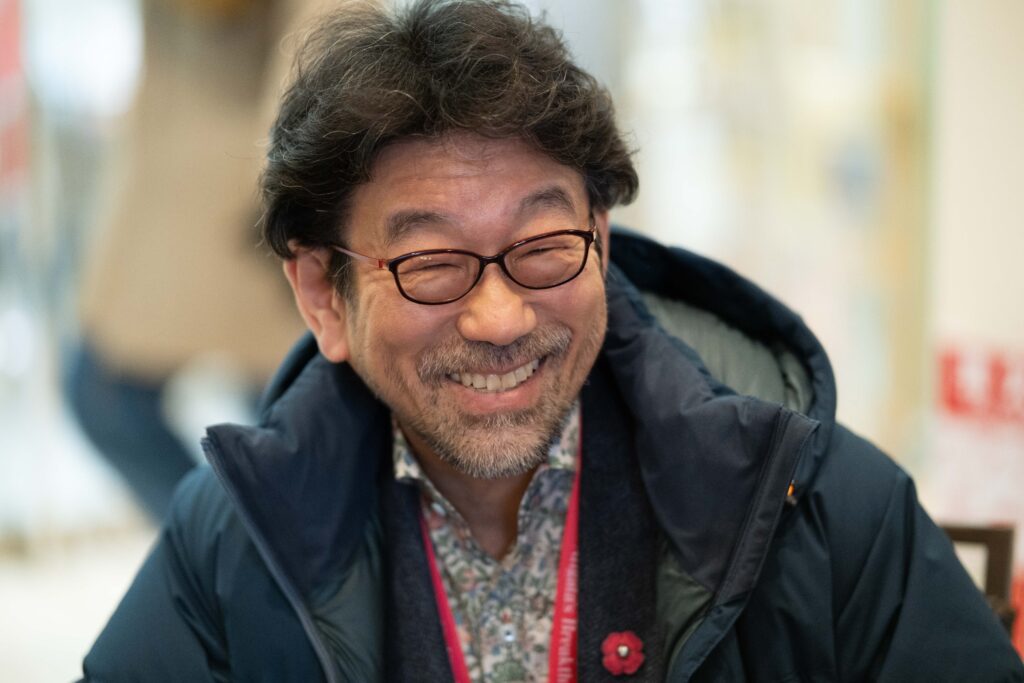At the 2023 edition of the MAGIC (Monaco Anime Game International Conference), organized by Shibuya Productions, we had the chance to meet multiple video game legends. One of them was none other than Kôji Igarashi, also commonly credited under his nickname IGA, mostly known for his massive impact on the Castlevania series. As a matter of fact, since he started working on the series with Castlevania: Symphony of the Night, the game design of the series changed altogether, creating a new style of Castlevania called “Igavania” that added an organic exploration to this previously very arcade-styled series, as well as RPG elements. Igarashi’s Castlevania also added an entirely new artistic dimension to the series, with Michiru Yamane’s music and Ayami Kojima as the main illustrator and character designer. He continued to explore that genre with other Castlevania games he produced for handheld consoles, like Aria of Sorrow and Order of Ecclesia. After he departed from Konami, he was one of the first Japanese game designers to use a crowdfunding platform to create a spiritual successor to his Castlevania games through the Bloodstained series.
However, summarizing Kôji Igarashi’s career to his famous Igavania games only would be incomplete. Before working on them, he was a programmer and scenario writer of another extremely influential game of a different genre: Tokimeki Memorial. Dating sims were never the same after this game that brought extremely innovative gameplay mechanics with statistics and RPG elements for your main character and an incredibly advanced relationship and story branching system. Outside of its mechanics, the game was also remembered for its well-written romances and characters that moved the players so much that some of them now make 6-hour-long video essays about it, like the famous YouTuber Tim Rogers. Since Kôji Igarashi was already interviewed many times about the Castlevania series, we thought it was a good opportunity to talk about this period in his career.
Like our content? Feel free to support us on Ko-Fi!
You are credited as a programmer and scenario writer for Tokimeki Memorial. Can you tell us how you built the scenario, if you had any difficulties working on romance, and what part of the game did you enjoy writing the most?
Kôji Igarashi: First of all, on how to write the scenario, I’ve written some novels and stuff like that in college. When I wrote the story for Tokimeki Memorial, I first drafted an organizational chart. When that was done, I wrote the core of the story, and once that was laid out, I built the dialogue patterns.
For example, when the weather is hot, the integration of the timing for dialogues such as “Oh, it’s so hot today!” is all laid out in the organizational chart and ready to be programmed. In that way, I wrote Tokimeki Memorial thinking about words I would be happy to hear from girls first and then work on building stories leading up to such situations for the players. That’s what the creation of the game was like.
You said in the past that your girlfriend, who then became your wife, gave you advice for writing Tokimeki Memorial. Can you tell us some of the advice she gave you?
Kôji Igarashi: She hasn’t given that much advice like that, really… What she was most helpful with was… You know… There are places a man can’t go alone… Thanks to her, I was able to go to such places where I couldn’t have gone by myself, such as clothing or accessories stores.
Tokimeki Memorial’s gameplay adds to love and human relationships a lot of RPG and strategic elements. Can you tell us where those gameplay ideas came from?
Kôji Igarashi: There had already been some simulation games where characters had stats in Japan. Games like Sotsugyou Graduation and Princess Maker.
We decided to make the game about the three years of high school but about the aspect of raising girls; as a player, you couldn’t see the girl’s stats. I started talking about how it was we, the player, who should be deciding what stats to raise by training ourselves. Then, that would influence the faces, the expressions, the way the girls talk, and their dialogues, which evaluate the result of our training. Because the game was based on this concept, there were a lot of restrictions, such as having all the girls’ dialogues dubbed.
About the romance, in mangas, romance is beautiful; in real life, it’s ugly drama. We created something with the goal of being able to live a beautiful love story, such as the ones in mangas.
Both Tokimeki Memorial and Castlevania: Symphony of the Night are filled with content. Did your work on Tokimeki Memorial influence the direction of Castlevania: Symphony of the Night?
Kôji Igarashi: We just put what we thought necessary in the minimum, and both games got voluminous at the end. We wanted players to enjoy our games long enough, and I think that led the games to become like that.
You’re known to be a big fan of Jojo’s Bizarre Adventure. Did that influence your work on Castlevania games? The relationship between the Belmont family and Dracula can remind us a lot of the Joestar family’s relationship with Dio Brando.
Kôji Igarashi: The director of Bloodstained, with whom we made Castlevania, is an even bigger fan of Jojo than me. He’s able to include a lot of references and homages to it. In fact, I hadn’t thought as far as to compare the relationship between the Belmonts and the Draculas and that of the Joestars. But a lot of references to Jojo made their way into the games.
How did you approach the artistic staff of the Castlevania games at the time, notably Ayami Kojima and Michiru Yamane? What kind of instruction did you give them for working on the Castlevania series?
Kôji Igarashi: Regarding Ms. Michiru Yamane, when we organized our team, developers and designers made up one team, and the sound crew was built separately. Regarding Ms. Yamane, she was assigned a lot of time, so we decided to work together. Regarding Ms. Kojima, I wanted to change the art style of the game. Until then, the aesthetic of Castlevania looked like Conan the Barbarian (laughs). I wanted to make it into something more seductive, more aesthetic.
Then I went to a bookshop to look for an artist and found out about Ayami Kojima. Since Konami had a connection with Ms. Kojima’s publisher, I asked a person in the department to introduce her to me, and I asked her to work with me.
With Ayami Kojima and Michiru Yamane, the Castlevania series has had a feminine influence. You said in the past that the lower difficulty of Symphony of the Night might have brought more female fans. At the time, did you want to find a new public for the Castlevania series?
Kôji Igarashi: If you can’t clear a game, doesn’t it lose some of its worth? That’s why I put a lot of effort so that anyone could play the whole story I created. I put in a level system; as you level up, you become stronger. I wanted to send a message to give your best because I had in mind that you should clear as much of the game as possible when making it.
Your Bloodstained games were exceptionally well received. Do you have any future projects in mind, and would you be interested in working with Ayami Kojima as the main artist again?
Kôji Igarashi: If an opportunity presents itself, I’d love to work with Ayami Kojima again, but to be honest, right now is not the right time.
About Bloodstained, I still wish to finish the pack I promised during the Kickstarter campaign. I will be focusing on that first. However, since the information has already leaked, I can say that the next project is already underway. But since the DLCs were canceled, it’s not the right time to make such a big announcement. But I hope you are excited about what is next.
The first Dark Souls is often compared to your Castlevania games since it has a very organic map with many interconnected zones. What do you think about FromSoftware games and the current Japanese game industry in general?
Kôji Igarashi: FromSoftware games are hard, but I think the company makes some truly good games. It’s true that there aren’t many new original games to come out of today’s Japanese video game industry. I think Japan has the ability to compete with the rest of the world. In that sense, I think to myself, can’t we challenge ourselves even more?
You worked in the industry in a lot of different environments. Home consoles, handheld consoles, and also indie game development with crowdfunding. When do you feel like you and your team had the most creative flexibility?
Kôji Igarashi: While I was working at Konami, the production team was able to work with a lot of flexibility. There were a lot of talented people at Konami, and when we had something we wanted to do, the rest responded by creating great works, so we had more things we could do, but now I’m working on my own business, and when we try to make what we want, it is harder.
What did it feel like to work at Konami? What possibilities but also what limits did you have while working there, and how did the company change over time?
Kôji Igarashi: Rather than saying that Konami as a company has changed, I would say it’s the working conditions in Japan that have changed. When I was working there, we could do about anything, even stay up all night to work if we wanted. It wasn’t the company forcing us into doing it, but rather that since we were convinced we were building great products, we thought we could make something even better if we did some more. Eventually, we stopped thinking like that and went on to do other things.
But as regulations and laws about working conditions get more strict, there are movements inside the company to ensure those are enforced. That creates a lot of restrictions.
It’s great news regarding the social impact and for the corporation, but not as much for us as creators. It’s become harder for people like us to work, compared to when we could work freely, in any way we wanted.
However, Konami gave me all the base knowledge to make a game, such as the fundamental knowledge about creating a game and the way to organize ideas, so I’m very grateful to them, and today I think to myself it was a good thing I did all of this with them.
Interview by Florian Abbas and Arnaud Bastié.
Translation by Charlotte Lambert and Comrade Karin.
We wish to heartfully thank Mr. Igarashi for their time, as well as Sophie Fabrello from Shibuya Production and the whole staff from Shibuya Production and MAGIC Monaco for this opportunity.
Like our content? Feel free to support us on Ko-Fi!
You might also be interested in
Oshi no Ko & (Mis)Communication – Short Interview with Aka Akasaka and Mengo Yokoyari
The Oshi no Ko manga, which recently ended its publication, was created through the association of two successful authors, Aka Akasaka, mangaka of the hit love comedy Kaguya-sama: Love Is War, and Mengo Yokoyari, creator of Scum's Wish. During their visit at the...
Ideon is the Ego’s death – Yoshiyuki Tomino Interview [Niigata International Animation Film Festival 2024]
Yoshiyuki Tomino is, without any doubt, one of the most famous and important directors in anime history. Not just one of the creators of Gundam, he is an incredibly prolific creator whose work impacted both robot anime and science-fiction in general. It was during...
“Film festivals are about meetings and discoveries” – Interview with Tarô Maki, Niigata International Animation Film Festival General Producer
As the representative director of planning company Genco, Tarô Maki has been a major figure in the Japanese animation industry for decades. This is due in no part to his role as a producer on some of anime’s greatest successes, notably in the theaters, with films...





Recent Comments